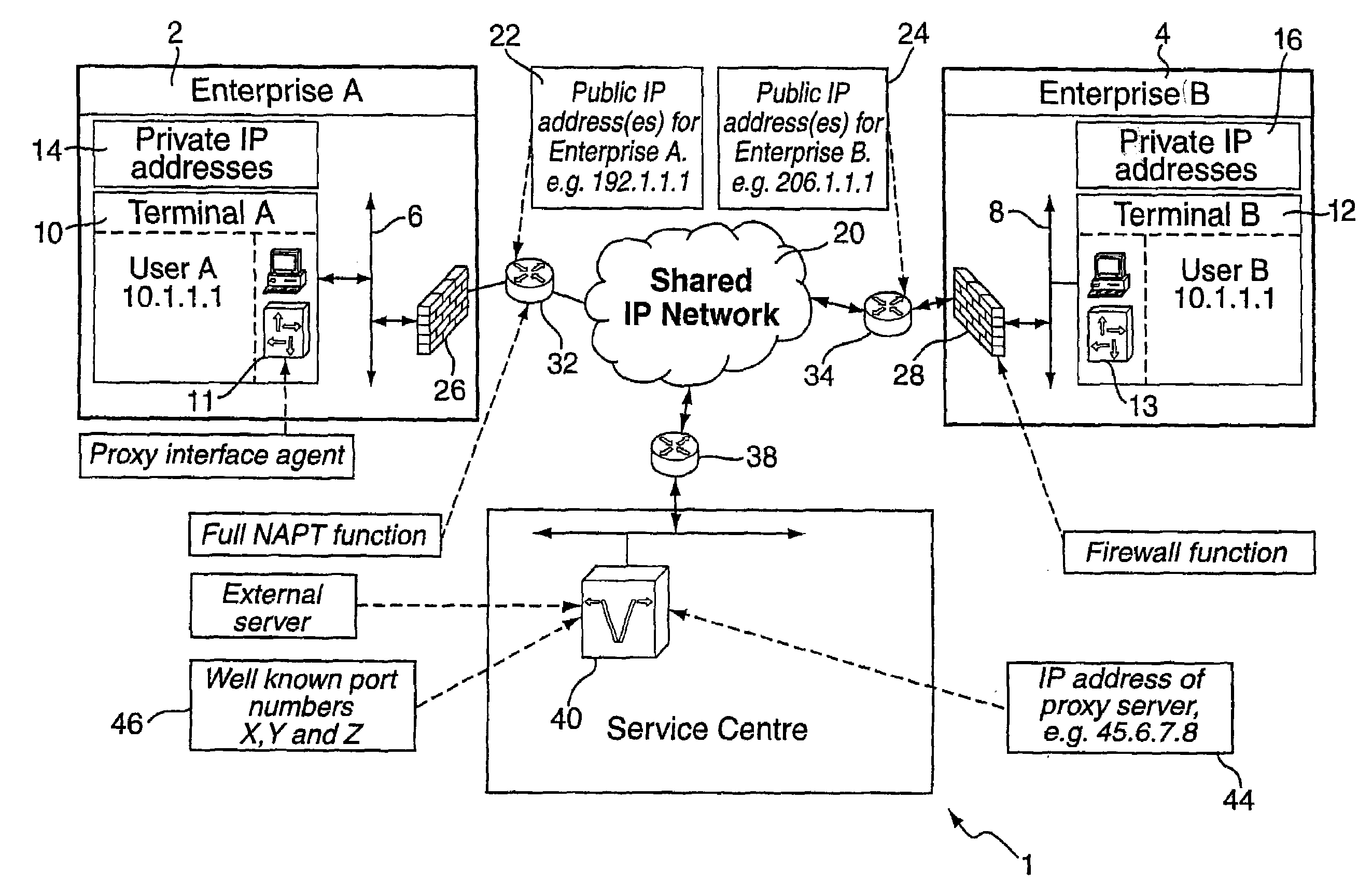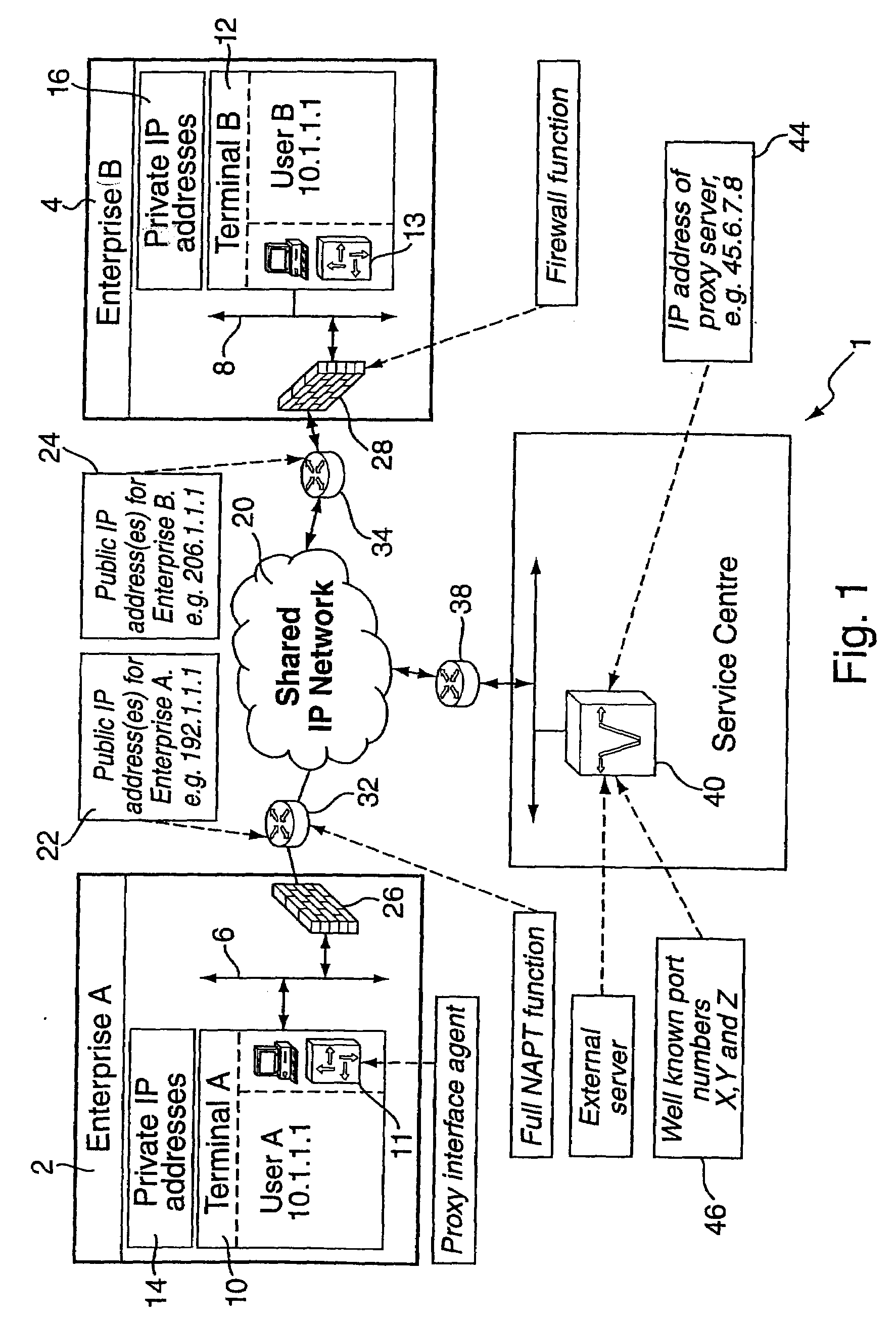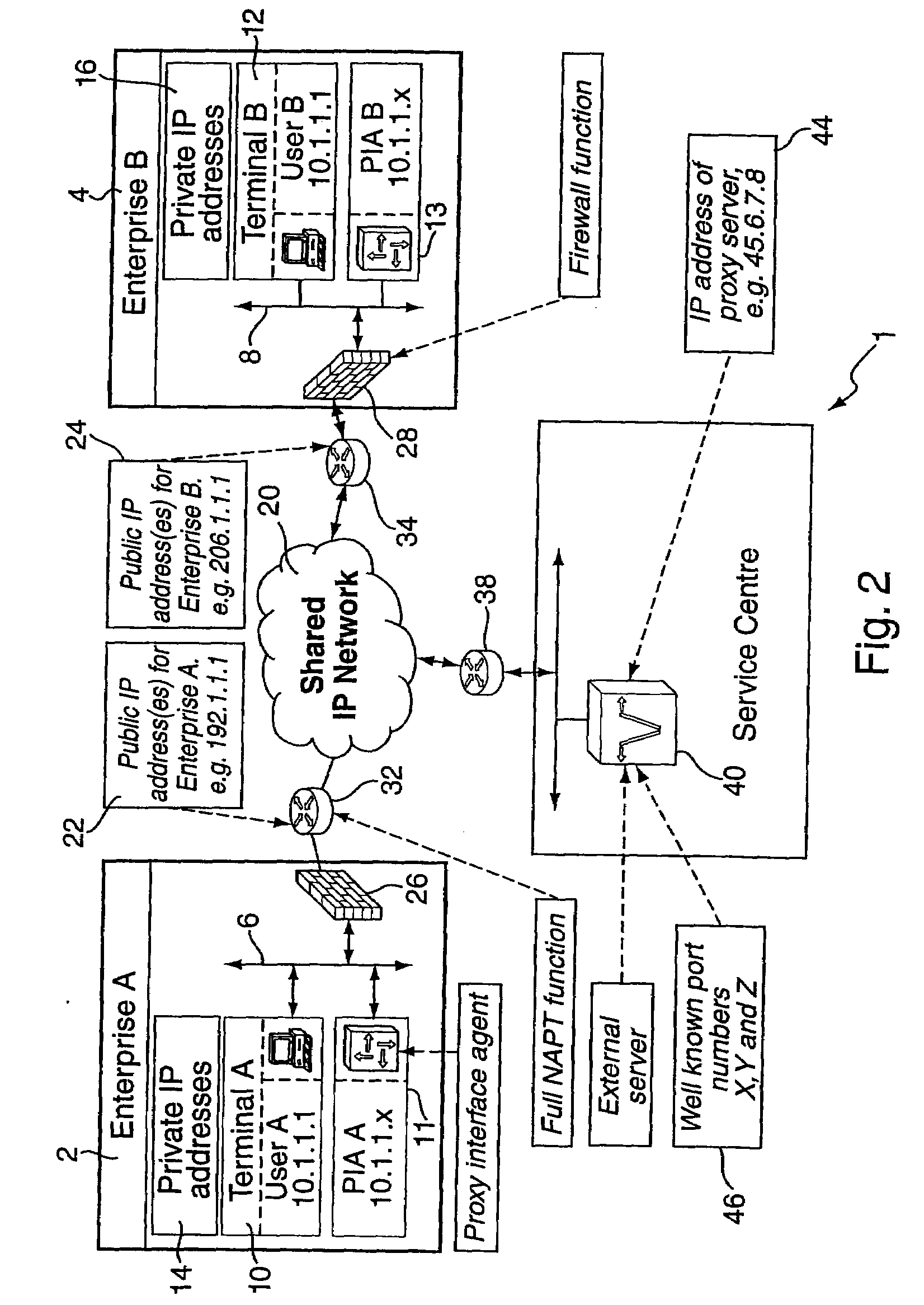Communications system
a communication system and communication technology, applied in the field of communication systems, can solve the problems of h.323 and sip still being deployed in the wide area of h.323 and sip, affecting the mass uptake of multimedia (particularly video) communications, and affecting the mark
- Summary
- Abstract
- Description
- Claims
- Application Information
AI Technical Summary
Benefits of technology
Problems solved by technology
Method used
Image
Examples
Embodiment Construction
[0125]The alternative to a complete H.323 upgrade is presented in the example described with reference to FIG. 1. This shows a communication system 1 having a first enterprise 2 and a second enterprise 4, each of which include private networks 6,8 both of which have one or more H.323 terminals 10,12. Each private network 6,8 has private IP addresses 14,16 coincidentally within the 10.x.x.x address range. The private IP addresses 14,16 may result from a static assignment or dynamic assignment through normal DHCP procedures. Included in the private networks 6,8 are proxy interface agents 11,13 that act on behalf of terminals 10,12 respectively. If the proxy interface agents are not co-located with their respective terminal(s), then the proxy interface agent(s) will have a unique IP address within the range of their respective private networks 14,16. In such cases, each proxy interface agent 11,13 may act on behalf of multiple terminals 10,12. In FIG. 1, the proxy interface agents are ...
PUM
 Login to View More
Login to View More Abstract
Description
Claims
Application Information
 Login to View More
Login to View More - R&D
- Intellectual Property
- Life Sciences
- Materials
- Tech Scout
- Unparalleled Data Quality
- Higher Quality Content
- 60% Fewer Hallucinations
Browse by: Latest US Patents, China's latest patents, Technical Efficacy Thesaurus, Application Domain, Technology Topic, Popular Technical Reports.
© 2025 PatSnap. All rights reserved.Legal|Privacy policy|Modern Slavery Act Transparency Statement|Sitemap|About US| Contact US: help@patsnap.com



